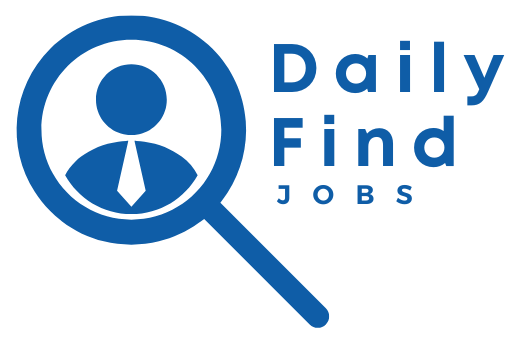Meetings can either be a productive session or a huge waste of time. To make your meetings more effective, start by clearly defining your goals beforehand. This ensures everyone is on the same page from the start. By following up with concrete action items, you can maintain momentum and accountability. Consider who needs to be present and prepare an agenda that guides the discussion effectively. This introduction sets the stage for understanding key elements such as identifying goals, selecting participants, and encouraging participation as outlined in the sections ahead.
Identify Meeting Goals
To identify meeting goals effectively, start by asking yourself and your team the purpose of the meeting. Is it to brainstorm new ideas, solve an existing problem, or update your team on current projects? Distinguishing the main objective helps in shaping the whole structure of your meeting.
Once the purpose is clear, ensure you communicate this goal to all participants. You can use an email or an internal messaging platform. This will help everyone to stay focused and come prepared with relevant insights. Knowing the expected outcome aids in better decision making during the meeting.
It’s also crucial to establish what does success look like for this meeting. Set measurable objectives if possible. For example, if the aim is to brainstorm, how many ideas do you want to generate? If solving a problem, what is an acceptable solution? This clarity benefits all participants, making sure that the meeting has both a clear direction and achievable goals.
Moreover, align these objectives with your team’s larger goals and KPIs. Doing so ensures that every meeting remains productive and furthers the organization’s targets. This is particularly useful in avoiding unnecessary meetings, sticking to essential topics, and ultimately, boosting productivity within your team.
Select the Right Participants
Choosing the right participants for your meetings is crucial for maximizing productivity. When organizing a meeting, it’s essential to ensure that only individuals who have a direct stake or role in the agenda items are involved. This not only keeps the meeting focused but also reduces unnecessary distractions.
Start by identifying the core team members required to achieve the meeting’s goals. Consider who can contribute significant insights or decisions. Inviting too many participants might lead to a cluttered conversation, making it challenging to reach conclusions efficiently.
Conversely, inviting too few people might impede the process of gathering diverse perspectives. It’s a delicate balance where you need to include key decision-makers, stakeholders, and those with the expertise necessary for informed discussions.
Moreover, inform each selected participant about their role and expectations during the meeting. A clear understanding of their contribution can lead to more meaningful and productive interactions during the session.
It’s also beneficial to consider the availability of the essential attendees. Schedule meetings at a time that suits all key participants to ensure that every required input is achieved.
Prepare an Agenda in Advance
Creating an agenda ahead of time is crucial for running effective meetings. It serves as a roadmap, guiding the conversation and ensuring that all necessary topics are covered. A well-structured agenda helps everyone stay focused and reduces time wasted on off-topic discussions.
Start by listing the main objectives you want to achieve. Break these down into specific topics to discuss. Allocate a realistic amount of time to each topic, keeping in mind the overall duration of the meeting. This allows participants to prepare accordingly and contributes to more productive discussions.
Share the agenda with participants at least a day in advance. This gives them an opportunity to review the topics and gather any relevant information they might need. Encouraging attendees to add their own points to the agenda can also foster a more inclusive and effective meeting environment.
Remember to include any expected outcomes for each topic. This sets clear expectations about what you hope to accomplish during the meeting and helps keep the conversation on track. An agenda is more than just a list—it’s a strategic tool to make your meetings more purposeful and organized.
Encourage Active Participation
To ensure your meetings are productive, it’s essential to encourage active participation from everyone involved. When participants engage, ideas flow more freely, and solutions emerge organically.
Why Active Participation Matters
Active engagement fosters collaboration and helps in decision-making, leading to more effective meetings. Every voice is heard, which promotes a sense of ownership and commitment to the outcomes.
Strategies to Foster Engagement
- Ask open-ended questions: Encourage attendees to share their thoughts by posing questions that require more than a yes/no answer.
- Create a safe environment: Make it clear that all ideas are welcome and there are no right or wrong answers.
- Use collaborative tools: Incorporate technology that allows real-time collaboration, like shared documents or interactive brainstorming apps.
- Encourage turn-taking: Set ground rules that ensure everyone has a chance to speak, preventing dominance by a few voices.
- Facilitate group activities: Break participants into smaller groups for discussions to increase comfort levels and improve participation.
The Role of the Facilitator
The meeting facilitator plays a crucial role in ensuring active participation. By guiding the conversation and encouraging quieter members to contribute, facilitators can balance the discussion and maximize engagement. Effective facilitators also monitor time to ensure that the meeting stays on track while allowing for robust discussion.
Conclusion
Active participation should not be left to chance. By deliberately fostering an inclusive and collaborative environment, meetings can become not only more productive but also energizing and inspiring for all participants.
Follow Up with Action Items
Ensuring that your meeting’s productivity translates into action, it’s crucial to follow up with action items effectively. Start by establishing clear responsibilities for each task discussed during the meeting. This clarity prevents confusion and increases accountability.
After the meeting, share a concise summary via email or your team’s communication platform. Include
- key points
- decisions made
- tasks assigned
- deadlines
This allows everyone to stay on the same page and serves as a valuable reference.
Utilize Tools for Tracking Progress
Efficiently tracking these tasks can significantly boost your team’s efficiency. Leveraging tools like project management software or collaborative to-do lists can help. These tools allow for easy tracking of progress and deadlines, ensuring nothing falls through the cracks.
Set regular check-ins to monitor progress and provide support as needed. This step is essential in maintaining momentum from the meeting and ensuring follow-through on all discussed items.
Encouraging feedback on the action items process can also enhance future meetings. Capture insights from participants on what worked and what didn’t, then refine your approach accordingly.

